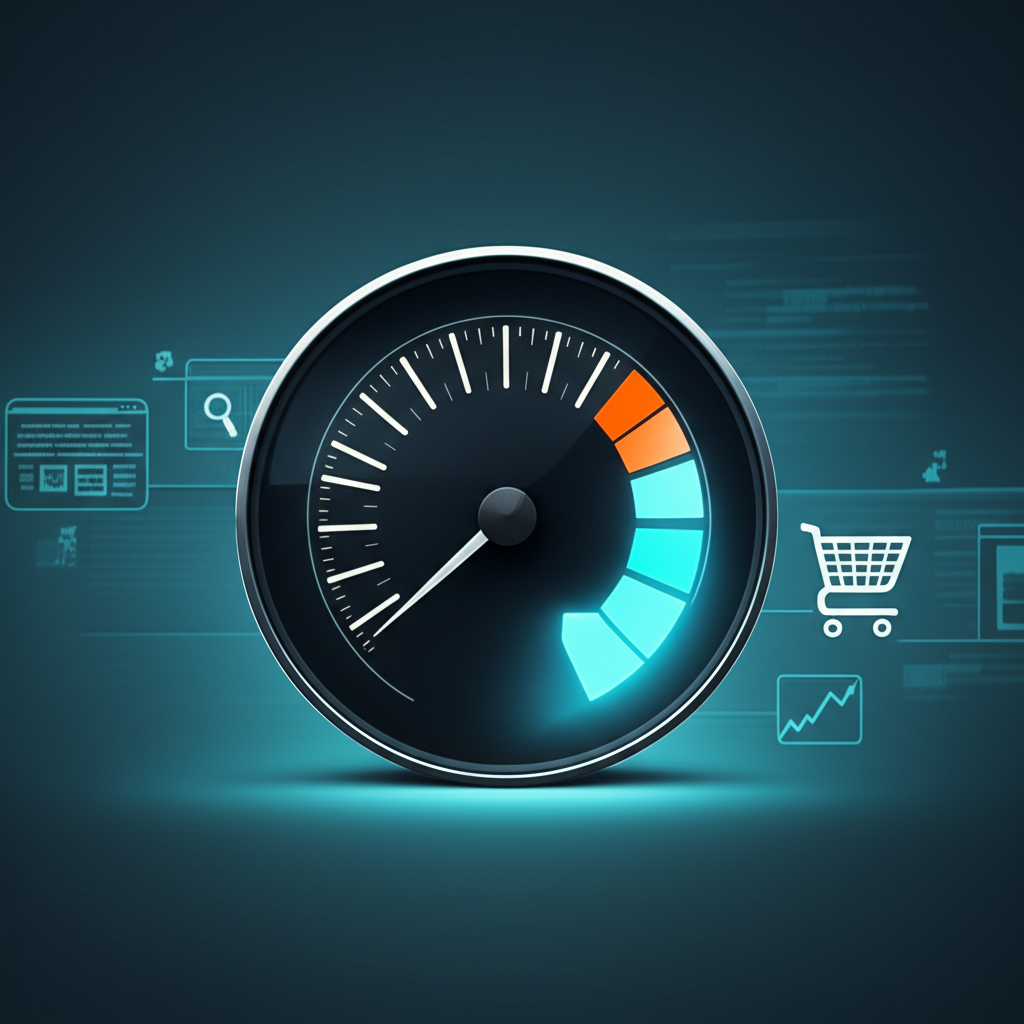- Why Website Speed Matters for SEO
- The Impact of Core Web Vitals on Website Speed and SEO
- How Website Speed Affects Sales
- Mobile Website Speed: A Crucial Factor for Conversions
- Optimizing Your Website for Speed: Tips and Strategies
- Website Speed: A Continuous Effort
Website Speed: Crucial for SEO & Sales
Website speed is a critical factor for both search engine optimization (SEO) and sales. A slow-loading website can negatively impact your search engine rankings, leading to decreased visibility and a significant drop in potential customers. In today’s fast-paced digital world, users expect websites to load quickly, and any delay can lead to frustration and abandonment, ultimately affecting your bottom line.
Why Website Speed Matters for SEO

Google has explicitly stated that page speed is a ranking factor. This means that faster websites are more likely to rank higher in search results, leading to increased organic traffic. Search engines prioritize user experience, and a slow website provides a poor user experience. By optimizing your website speed, you’re essentially telling Google that you value your visitors’ time and are providing them with a seamless browsing experience. This can result in a significant boost in your search engine rankings, making your website more visible to potential customers.
The Impact of Core Web Vitals on Website Speed and SEO
Core Web Vitals are a set of metrics that measure real-world user experience related to loading performance, interactivity, and visual stability. These metrics are now a crucial part of Google’s ranking algorithm. Optimizing for Core Web Vitals, which includes metrics like Largest Contentful Paint (LCP), First Input Delay (FID), and Cumulative Layout Shift (CLS), is no longer optional but essential for achieving good SEO performance. A good LCP score ensures that the main content of your page loads quickly, FID measures the responsiveness of your page to user interactions, and CLS quantifies the visual stability of your page, preventing unexpected shifts in content layout that can frustrate users. By addressing these metrics, you directly enhance user experience and improve your SEO.
How Website Speed Affects Sales
The impact of website speed extends beyond SEO, directly impacting sales. A slow-loading website can significantly deter potential customers. Studies have shown that even a one-second delay in page load time can lead to a significant drop in conversion rates. Users are impatient, and if your website takes too long to load, they are likely to abandon it and go to a competitor’s site. This translates directly into lost sales and revenue. Conversely, a fast-loading website provides a smooth and satisfying user experience, encouraging visitors to explore more pages, spend more time on your site, and ultimately, make a purchase.
Mobile Website Speed: A Crucial Factor for Conversions
With the increasing dominance of mobile browsing, mobile website speed has become even more critical. Mobile users are often on slower connections and have less patience for slow-loading websites. Optimizing your website for mobile is not just about responsive design; it also requires prioritizing mobile page speed. A fast mobile experience can significantly increase your mobile conversion rates, capturing potential customers who are browsing on the go. Failing to optimize for mobile speed can mean losing a significant portion of your potential customer base.
Optimizing Your Website for Speed: Tips and Strategies
Improving your website speed requires a multifaceted approach. Here are some key strategies to implement:
Optimize Images: Large image files are a common culprit of slow loading times. Compress your images without sacrificing quality using tools like TinyPNG or ShortPixel. Use appropriate image formats (JPEG for photos, PNG for graphics with transparency) and implement lazy loading to defer loading of images below the fold until they are needed.
Leverage Browser Caching: Browser caching allows repeat visitors to load your website faster by storing static resources like images, CSS, and JavaScript files on their local device. Configure your server to set appropriate cache control headers to maximize the benefits of browser caching.
Minify CSS and JavaScript: Minification removes unnecessary characters from your CSS and JavaScript files, reducing their size and improving download speeds. Use online tools or plugins to minify your code.
Choose a Fast Web Host: Your web hosting provider plays a significant role in your website’s speed. Opt for a reputable provider with fast servers and a good track record of uptime. Consider Content Delivery Networks (CDNs) which distribute your content across multiple servers globally, allowing users to access it from the closest server, further reducing latency.
Enable GZIP Compression: GZIP compression reduces the size of your HTML, CSS, and JavaScript files, leading to faster download times. Enable GZIP compression on your server to significantly improve your website’s performance.
Use a Content Delivery Network (CDN): A CDN stores copies of your website’s static files on servers around the world. This allows visitors to access your website from the server closest to them, resulting in faster loading times.
Website Speed: A Continuous Effort
Optimizing website speed is not a one-time task but an ongoing process. Regularly monitor your website’s performance using tools like Google PageSpeed Insights, GTmetrix, and WebPageTest. Analyze the results and identify areas for improvement. By consistently focusing on website speed, you not only improve your SEO and boost sales but also provide a better user experience, building stronger customer relationships and fostering long-term success.











Leave a Reply